Shakil Ahmed
OSI Stack Redesign for Quantum Networks: Requirements, Technologies, Challenges, and Future Directions
Jun 13, 2025Abstract:Quantum communication is poised to become a foundational element of next-generation networking, offering transformative capabilities in security, entanglement-based connectivity, and computational offloading. However, the classical OSI model-designed for deterministic and error-tolerant systems-cannot support quantum-specific phenomena such as coherence fragility, probabilistic entanglement, and the no-cloning theorem. This paper provides a comprehensive survey and proposes an architectural redesign of the OSI model for quantum networks in the context of 7G. We introduce a Quantum-Converged OSI stack by extending the classical model with Layer 0 (Quantum Substrate) and Layer 8 (Cognitive Intent), supporting entanglement, teleportation, and semantic orchestration via LLMs and QML. Each layer is redefined to incorporate quantum mechanisms such as enhanced MAC protocols, fidelity-aware routing, and twin-based applications. This survey consolidates over 150 research works from IEEE, ACM, MDPI, arXiv, and Web of Science (2018-2025), classifying them by OSI layer, enabling technologies such as QKD, QEC, PQC, and RIS, and use cases such as satellite QKD, UAV swarms, and quantum IoT. A taxonomy of cross-layer enablers-such as hybrid quantum-classical control, metadata-driven orchestration, and blockchain-integrated quantum trust-is provided, along with simulation tools including NetSquid, QuNetSim, and QuISP. We present several domain-specific applications, including quantum healthcare telemetry, entangled vehicular networks, and satellite mesh overlays. An evaluation framework is proposed based on entropy throughput, coherence latency, and entanglement fidelity. Key future directions include programmable quantum stacks, digital twins, and AI-defined QNet agents, laying the groundwork for a scalable, intelligent, and quantum-compliant OSI framework for 7G and beyond.
Enhanced Position Estimation in Tactile Internet-Enabled Remote Robotic Surgery Using MOESP-Based Kalman Filter
Jan 27, 2025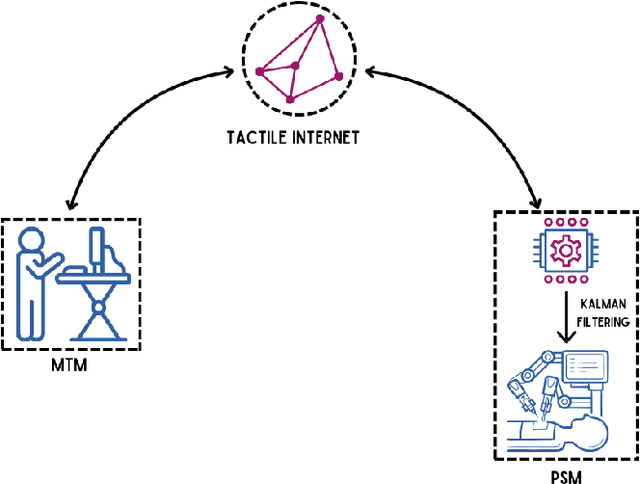
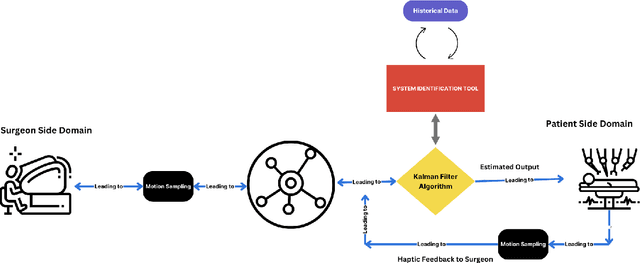


Abstract:Accurately estimating the position of a patient's side robotic arm in real time during remote surgery is a significant challenge, especially within Tactile Internet (TI) environments. This paper presents a new and efficient method for position estimation using a Kalman Filter (KF) combined with the Multivariable Output-Error State Space (MOESP) method for system identification. Unlike traditional approaches that require prior knowledge of the system's dynamics, this study uses the JIGSAW dataset, a comprehensive collection of robotic surgical data, along with input from the Master Tool Manipulator (MTM) to derive the state-space model directly. The MOESP method allows accurate modeling of the Patient Side Manipulator (PSM) dynamics without prior system models, improving the KF's performance under simulated network conditions, including delays, jitter, and packet loss. These conditions mimic real-world challenges in Tactile Internet applications. The findings demonstrate the KF's improved resilience and accuracy in state estimation, achieving over 95 percent accuracy despite network-induced uncertainties.
A Predictive Approach for Enhancing Accuracy in Remote Robotic Surgery Using Informer Model
Jan 24, 2025Abstract:Precise and real-time estimation of the robotic arm's position on the patient's side is essential for the success of remote robotic surgery in Tactile Internet (TI) environments. This paper presents a prediction model based on the Transformer-based Informer framework for accurate and efficient position estimation. Additionally, it combines a Four-State Hidden Markov Model (4-State HMM) to simulate realistic packet loss scenarios. The proposed approach addresses challenges such as network delays, jitter, and packet loss to ensure reliable and precise operation in remote surgical applications. The method integrates the optimization problem into the Informer model by embedding constraints such as energy efficiency, smoothness, and robustness into its training process using a differentiable optimization layer. The Informer framework uses features such as ProbSparse attention, attention distilling, and a generative-style decoder to focus on position-critical features while maintaining a low computational complexity of O(L log L). The method is evaluated using the JIGSAWS dataset, achieving a prediction accuracy of over 90 percent under various network scenarios. A comparison with models such as TCN, RNN, and LSTM demonstrates the Informer framework's superior performance in handling position prediction and meeting real-time requirements, making it suitable for Tactile Internet-enabled robotic surgery.
Adaptive Context-Aware Multi-Path Transmission Control for VR/AR Content: A Deep Reinforcement Learning Approach
Dec 27, 2024



Abstract:This paper introduces the Adaptive Context-Aware Multi-Path Transmission Control Protocol (ACMPTCP), an efficient approach designed to optimize the performance of Multi-Path Transmission Control Protocol (MPTCP) for data-intensive applications such as augmented and virtual reality (AR/VR) streaming. ACMPTCP addresses the limitations of conventional MPTCP by leveraging deep reinforcement learning (DRL) for agile end-to-end path management and optimal bandwidth allocation, facilitating path realignment across diverse network environments.
Efficient VoIP Communications through LLM-based Real-Time Speech Reconstruction and Call Prioritization for Emergency Services
Dec 09, 2024Abstract:Emergency communication systems face disruptions due to packet loss, bandwidth constraints, poor signal quality, delays, and jitter in VoIP systems, leading to degraded real-time service quality. Victims in distress often struggle to convey critical information due to panic, speech disorders, and background noise, further complicating dispatchers' ability to assess situations accurately. Staffing shortages in emergency centers exacerbate delays in coordination and assistance. This paper proposes leveraging Large Language Models (LLMs) to address these challenges by reconstructing incomplete speech, filling contextual gaps, and prioritizing calls based on severity. The system integrates real-time transcription with Retrieval-Augmented Generation (RAG) to generate contextual responses, using Twilio and AssemblyAI APIs for seamless implementation. Evaluation shows high precision, favorable BLEU and ROUGE scores, and alignment with real-world needs, demonstrating the model's potential to optimize emergency response workflows and prioritize critical cases effectively.
Revolutionizing Undergraduate Learning: CourseGPT and Its Generative AI Advancements
Jul 25, 2024



Abstract:Integrating Generative AI (GenAI) into educational contexts presents a transformative potential for enhancing learning experiences. This paper introduces CourseGPT, a generative AI tool designed to support instructors and enhance the educational experiences of undergraduate students. Built on open-source Large Language Models (LLMs) from Mistral AI, CourseGPT offers continuous instructor support and regular updates to course materials, enriching the learning environment. By utilizing course-specific content, such as slide decks and supplementary readings and references, CourseGPT provides precise, dynamically generated responses to student inquiries. Unlike generic AI models, CourseGPT allows instructors to manage and control the responses, thus extending the course scope without overwhelming details. The paper demonstrates the application of CourseGPT using the CPR E 431 - Basics of Information System Security course as a pilot. This course, with its large enrollments and diverse curriculum, serves as an ideal testbed for CourseGPT. The tool aims to enhance the learning experience, accelerate feedback processes, and streamline administrative tasks. The study evaluates CourseGPT's impact on student outcomes, focusing on correctness scores, context recall, and faithfulness of responses. Results indicate that the Mixtral-8x7b model, with a higher parameter count, outperforms smaller models, achieving an 88.0% correctness score and a 66.6% faithfulness score. Additionally, feedback from former students and teaching assistants on CourseGPT's accuracy, helpfulness, and overall performance was collected. The outcomes revealed that a significant majority found CourseGPT to be highly accurate and beneficial in addressing their queries, with many praising its ability to provide timely and relevant information.
Pilot Contamination in Massive MIMO Systems: Challenges and Future Prospects
Apr 30, 2024
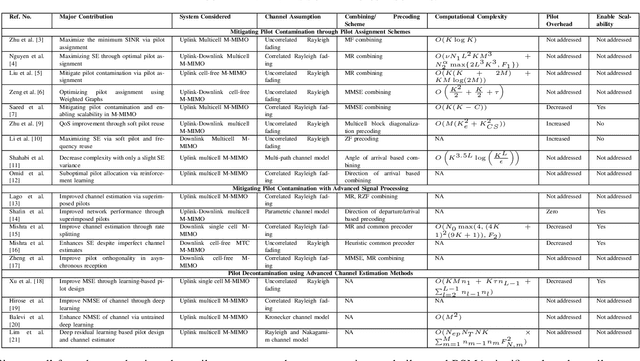
Abstract:Massive multiple input multiple output (M-MIMO) technology plays a pivotal role in fifth-generation (5G) and beyond communication systems, offering a wide range of benefits, from increased spectral efficiency (SE) to enhanced energy efficiency and higher reliability. However, these advantages are contingent upon precise channel state information (CSI) availability at the base station (BS). Ensuring precise CSI is challenging due to the constrained size of the coherence interval and the resulting limitations on pilot sequence length. Therefore, reusing pilot sequences in adjacent cells introduces pilot contamination, hindering SE enhancement. This paper reviews recent advancements and addresses research challenges in mitigating pilot contamination and improving channel estimation, categorizing the existing research into three broader categories: pilot assignment schemes, advanced signal processing methods, and advanced channel estimation techniques. Salient representative pilot mitigation/assignment techniques are analyzed and compared in each category. Lastly, possible future research directions are discussed.
Blockage Prediction for Mobile UE in RIS-assisted Wireless Networks: A Deep Learning Approach
Sep 22, 2022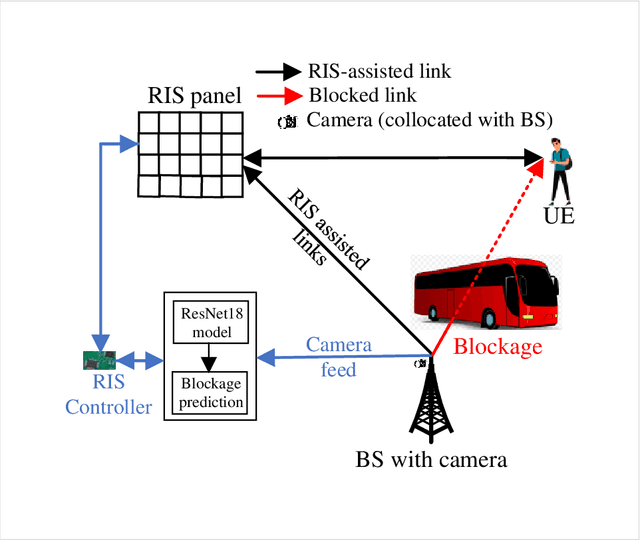
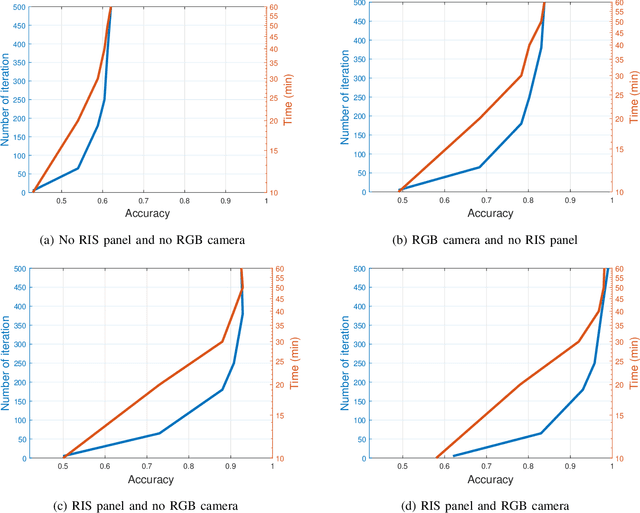
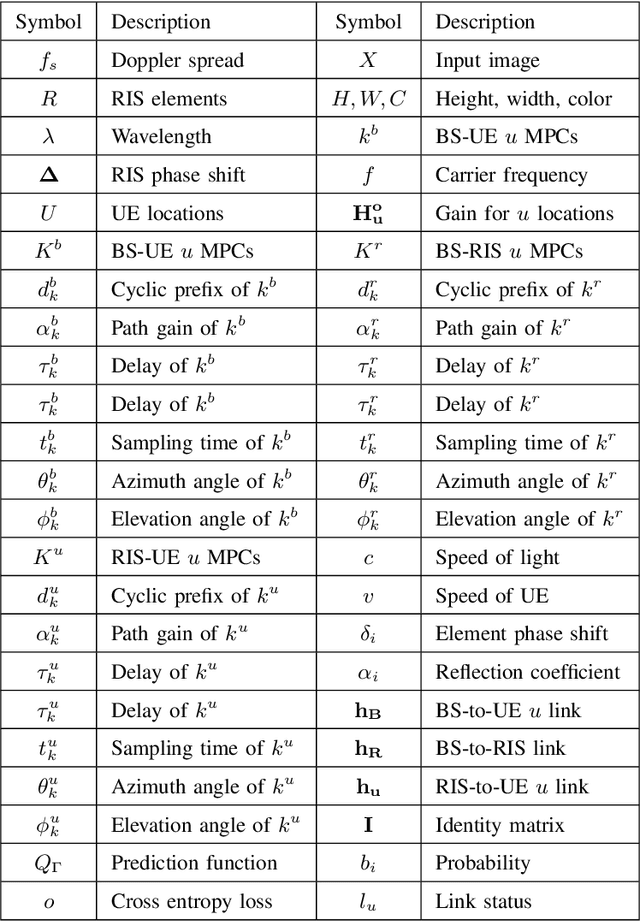
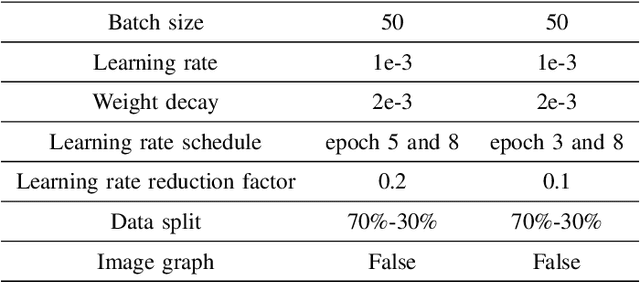
Abstract:Due to significant blockage conditions in wireless networks, transmitted signals may considerably degrade before reaching the receiver. The reliability of the transmitted signals, therefore, may be critically problematic due to blockages between the communicating nodes. Thanks to the ability of Reconfigurable Intelligent Surfaces (RISs) to reflect the incident signals with different reflection angles, this may counter the blockage effect by optimally reflecting the transmit signals to receiving nodes, hence, improving the wireless network's performance. With this motivation, this paper formulates a RIS-aided wireless communication problem from a base station (BS) to a mobile user equipment (UE). The BS is equipped with an RGB camera. We use the RGB camera at the BS and the RIS panel to improve the system's performance while considering signal propagating through multiple paths and the Doppler spread for the mobile UE. First, the RGB camera is used to detect the presence of the UE with no blockage. When unsuccessful, the RIS-assisted gain takes over and is then used to detect if the UE is either "present but blocked" or "absent". The problem is determined as a ternary classification problem with the goal of maximizing the probability of UE communication blockage detection. We find the optimal solution for the probability of predicting the blockage status for a given RGB image and RIS-assisted data rate using a deep neural learning model. We employ the residual network 18-layer neural network model to find this optimal probability of blockage prediction. Extensive simulation results reveal that our proposed RIS panel-assisted model enhances the accuracy of maximization of the blockage prediction probability problem by over 38\% compared to the baseline scheme.
A Survey of Methods for Managing the Classification and Solution of Data Imbalance Problem
Dec 22, 2020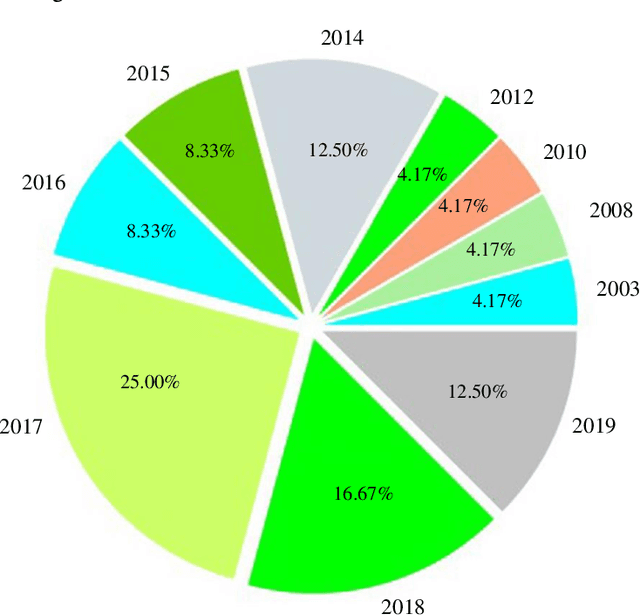

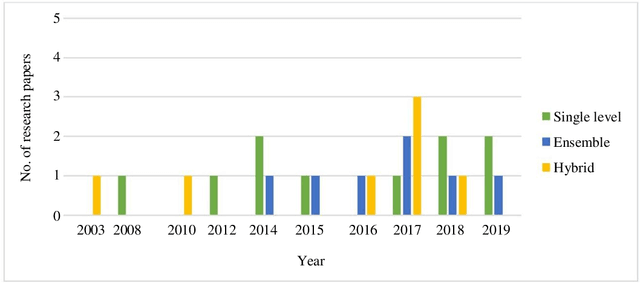
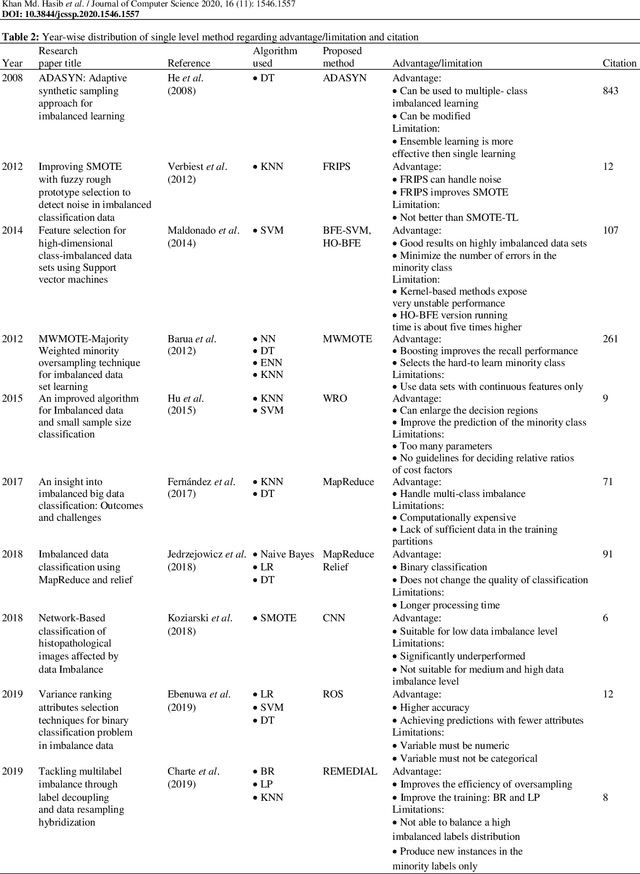
Abstract:The problem of class imbalance is extensive for focusing on numerous applications in the real world. In such a situation, nearly all of the examples are labeled as one class called majority class, while far fewer examples are labeled as the other class usually, the more important class is called minority. Over the last few years, several types of research have been carried out on the issue of class imbalance, including data sampling, cost-sensitive analysis, Genetic Programming based models, bagging, boosting, etc. Nevertheless, in this survey paper, we enlisted the 24 related studies in the years 2003, 2008, 2010, 2012 and 2014 to 2019, focusing on the architecture of single, hybrid, and ensemble method design to understand the current status of improving classification output in machine learning techniques to fix problems with class imbalances. This survey paper also includes a statistical analysis of the classification algorithms under various methods and several other experimental conditions, as well as datasets used in different research papers.
* 12 Pages, 2 Figures
 Add to Chrome
Add to Chrome Add to Firefox
Add to Firefox Add to Edge
Add to Edge